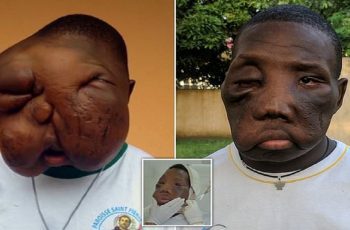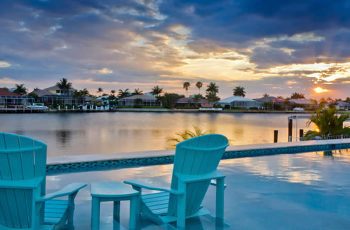Are you self-conscious about your chest acne? Do you feel like it’s the only thing people see when they look at you? You’re not alone. Chest acne breakout is a common but often misunderstood skin condition that affects millions of people worldwide. Although it’s not as severe as other types of acne, it can be very painful and uncomfortable.
While it can be challenging to treat, there are ways to get rid of chest acne for good. In this blog, we’ll discuss the causes of chest acne and how to get rid of it using natural and medical spot treatments. So if you’re struggling with chest acne, keep reading! We’ll help you get your skin looking clear and healthy again.
What Exactly is Chest Acne?
Acne happens when sebum and dead skin cells get stuck in the hair follicles. Sebum is an oily substance made by the sebaceous glands. When this happens, bacteria can grow and cause inflammation. Chest acne is simply acne that occurs on the chest.
Chest acne is a common oily skin condition that affects people of all ages. Some people may develop acne later in life. Most of the time, it looks like red or white bumps on the chest. Itching, burning, or pain may also be present. While chest acne is not usually severe, it can be uncomfortable and embarrassing.

What Causes Chest Acne?
1. Sweat and tight clothing: If you get a rash after working out or wear sweaty clothing, your chest acne is most likely caused by sweat and friction. Try showering immediately after working out and wear clothing that is loose-fitting, breathable fabrics whenever possible to combat this.
2. Clogged pores: Clogged pores are one of the most common causes of chest acne breakouts. If you suspect your breakouts are due to clogged pores, try using a salicylic acid cleanser or toner once or twice a day. You can also use a pore strip to physically remove the dirt and oil from your pores (make sure not to use them too often, as they can be harsh on the skin).
3. Dead skin cells: When dead skin cells accumulate on the skin’s surface, they can cause clogged pores and severe acne breakouts. To prevent this from happening, make sure to exfoliate your chest regularly with a gentle scrub or exfoliating pad to remove dead skin cells. Once or twice a week should suffice to treat chest acne.
4. Hormonal changes: Hormonal changes in the body—such as those that occur during puberty, pregnancy, and menopause—can trigger an increase in sebum production, which can, in turn, clog pores and breakouts. If you think your chest acne might be hormone-related, talk to your doctor; they may be able to prescribe medication to help regulate your hormones, clear up your skin, and treat acne in the process.
5. Certain medications: Some medications, such as birth control pills and steroids, can increase sebum production and clog pores that cause chest breakouts. If you think your chest acne breakouts might be caused by medication, talk to your doctor; they may be able to prescribe an alternative medicine that won’t cause breakouts.
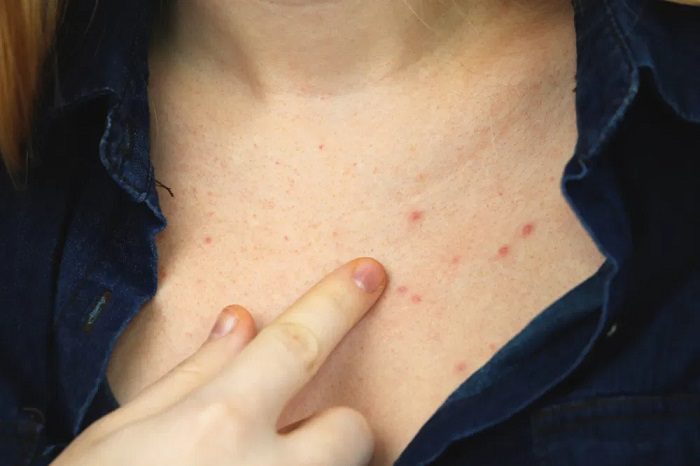
How to Get Rid of Chest Acne?
You need to take four steps to get rid of chest acne fast. They are: cleanse, exfoliate, moisturize, and protect. Let’s take a closer look at each step.
Step One: Cleanse
The first step in getting rid of chest acne is to cleanse your skin both morning and night. Use a gentle cleanser that won’t strip your skin of its natural oils. Avoid cleansers containing harsh chemicals or fragrances, as these can irritate your skin and worsen your acne.
Step Two: Exfoliate
Exfoliating your skin helps to remove dead skin cells that can clog pores and lead to breakouts. Look for an exfoliating product containing salicylic acid or glycolic acid, as these ingredients effectively eliminate chest acne. Use your exfoliating product twice a week for the best results.
Step Three: Moisturize
It is essential to moisturize your skin even if you have acne. When used correctly, moisturizer can help to control breakouts by keeping your skin hydrated and reducing inflammation. Look for a light, oil-free moisturizer that won’t clog pores. Apply your moisturizer after cleansing and exfoliating before applying other products such as sunscreen or makeup.
Step Four: Protect
The final step in getting rid of chest acne is to protect your skin from the sun. Too much sun exposure can irritate your skin and make acne worse. Therefore, apply a broad-spectrum sunscreen with an SPF of 30 or higher before going outside—even on cloudy days. In addition to sunscreen, consider wearing loose-fitting clothing that covers your chest when spending time outdoors.
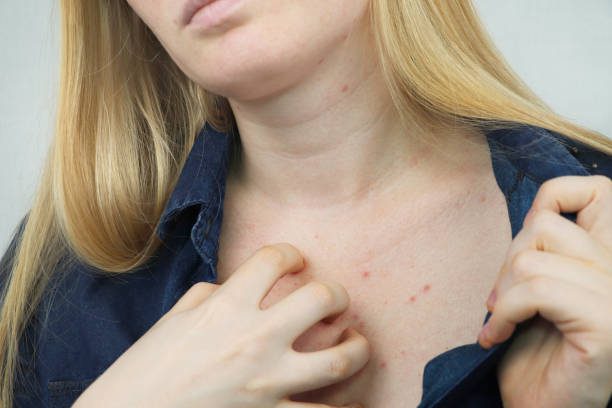
Additional Tips to Get Rid of Chest Acne
Evaluate your post-workout routine
Acne on the chest can be caused by sweat, friction from clothing, and bacteria, among other things. Fortunately, there are a few simple steps that can help to prevent and treat chest acne.
First, cleaning the skin immediately after working out or sweating is essential. This will help to remove any sweat or bacteria that may be trapped on the skin. Second, be sure to choose loose-fitting clothing whenever possible. Tight clothing can trap sweat and bacteria against the skin, irritating it and making it more likely to get pimples. Lastly, consider using an over-the-counter acne treatment that contains benzoyl peroxide or salicylic acid. These ingredients can help to kill bacteria and dry up excess oil, making them a practical option for treating and preventing chest acne.
Consider a “chest facial”
One solution is to try a “chest facial.” This involves using a variety of treatments specifically designed to cleanse and exfoliate the skin on your chest. Chest facials can be performed at home or a spa, typically cleansing, steaming, exfoliation, and masques. If you’re trying a chest facial, consult a board certified dermatologist or esthetician first to ensure it’s suitable for your skin type.
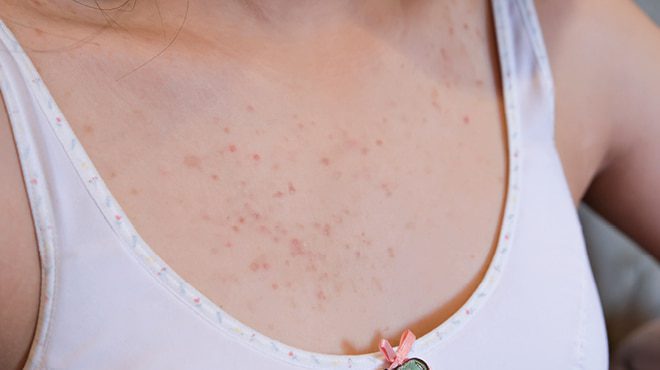
Use an acne-specific body wash
If you’re struggling with chest acne, you may use the wrong body wash. Acne is caused by a build-up of oil and dead skin cells, so it’s important to use a body wash that can effectively remove these impurities. Look for a body wash that contains salicylic acid or benzoyl peroxide, as these ingredients can help to unclog pores and prevent future breakouts. Be sure to apply the body wash to your chest and back in gentle circular motions, avoiding harsh scrubbing. Next, rinse thoroughly with warm water and pat your skin dry. For best results, use the body wash twice daily. With regular use, you should notice a reduction in chest acne.
Try a topical treatment
Another effective acne treatment is to use a topical cream or gel that contains an acne-fighting ingredient like benzoyl peroxide or salicylic acid. Apply the product to your chest once or twice a day and wash it off thoroughly before bed. You should start to see results within a few weeks. In addition, try to keep your chest area clean and dry by showering after sweating and wearing loose-fitting clothes.
Turn to oral prescription medication
Prescription oral medication can be an effective treatment for chest acne. This medication helps reduce oil production, clear the pores, and fight bacteria. However, following your dermatologist’s instructions when taking this medication is important, as it can cause dryness, redness, and peeling if misused.
Consult a dermatologist to discuss your options and find a medication that will work for you. For example, oral antibiotics generally kill the bacteria that cause acne, while isotretinoin reduces inflammation and oil production.
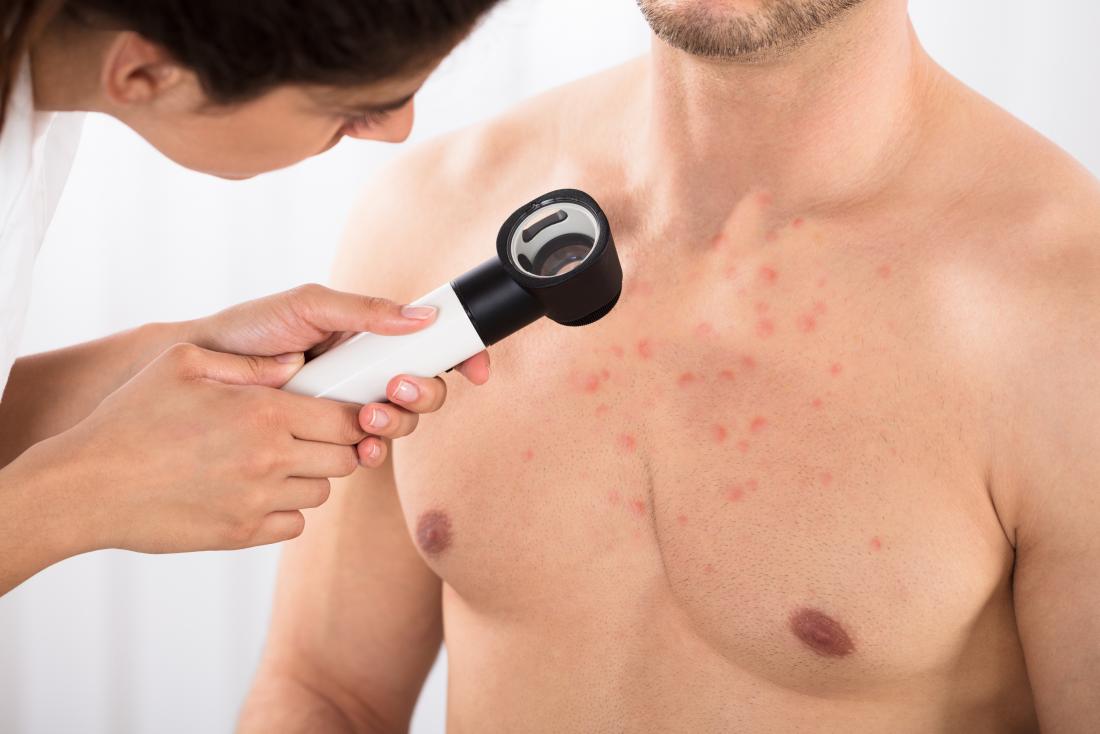
Final Thoughts
Chest acne can be an embarrassing and uncomfortable issue. Fortunately, with the right approach and treatments, it is possible to get rid of chest acne. There are many ways to address the issue, from using an acne-specific body wash to trying a topical treatment or prescription medication. Before beginning any treatment regimen, it is always best to consult a dermatologist for advice and guidance. With the help of a professional, you can find an effective solution that works for you. Good luck, and take care of your skin!
Frequently Asked Questions
Why am I getting acne on my chest?
Hormonal changes in your body can lead to breakouts, including those on the chest. This is because acne occurs when oil and bacteria become trapped inside pores that may have been opened by friction. These pimples would be hormone-related changes such as increased production during menstruation.
Does acne on the chest go away?
Some people with mild to moderate cases of chest acne can successfully treat it independently, while others will need medical help. Severely affected individuals should see a doctor immediately if they are unsure whether the problem is another skin condition rather than a serious illness like cancer or pneumonia.
Why do I have chest and back acne?
The easiest way to get rid of acne is by keeping your skin clean and using the right products. In addition, it’s critical to keep sweat from getting trapped in pores with a backpack or other piece of clothing for back acne, as this will aggravate the condition for those who suffer from these oxide-related blemishes!
What is acne on your chest called?
Acne on the chest is a very common form of acne. This type can occur when pores in your skin get clogged and inflamed, causing redness with visible bumps or spots filled with inflammation fluid (cysts).


